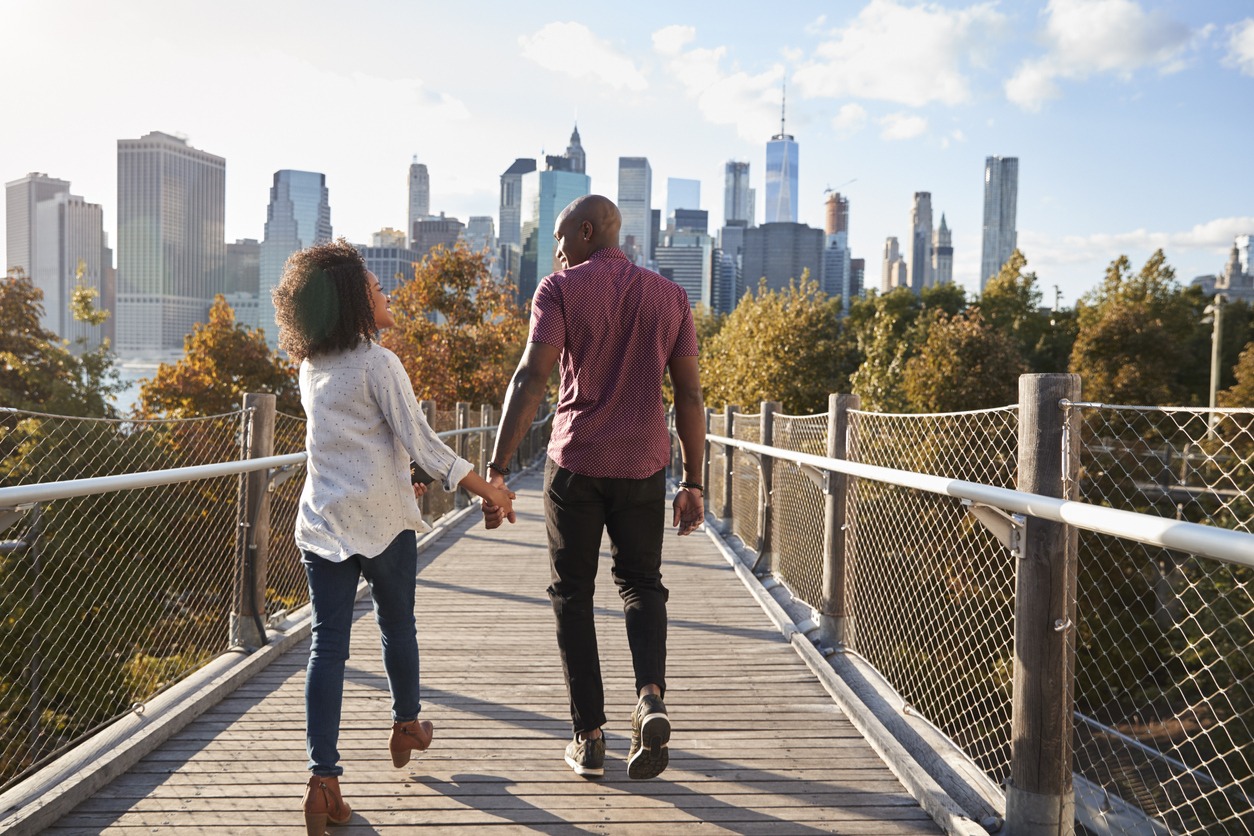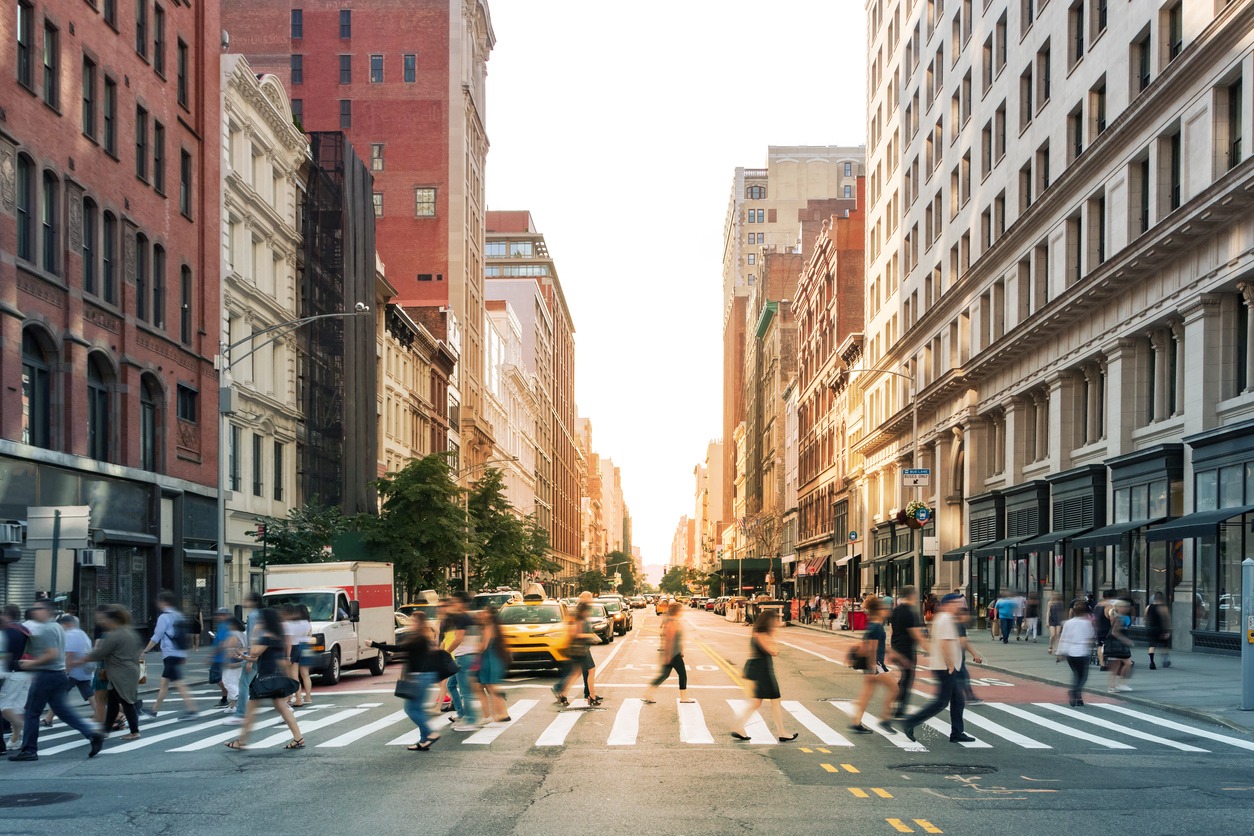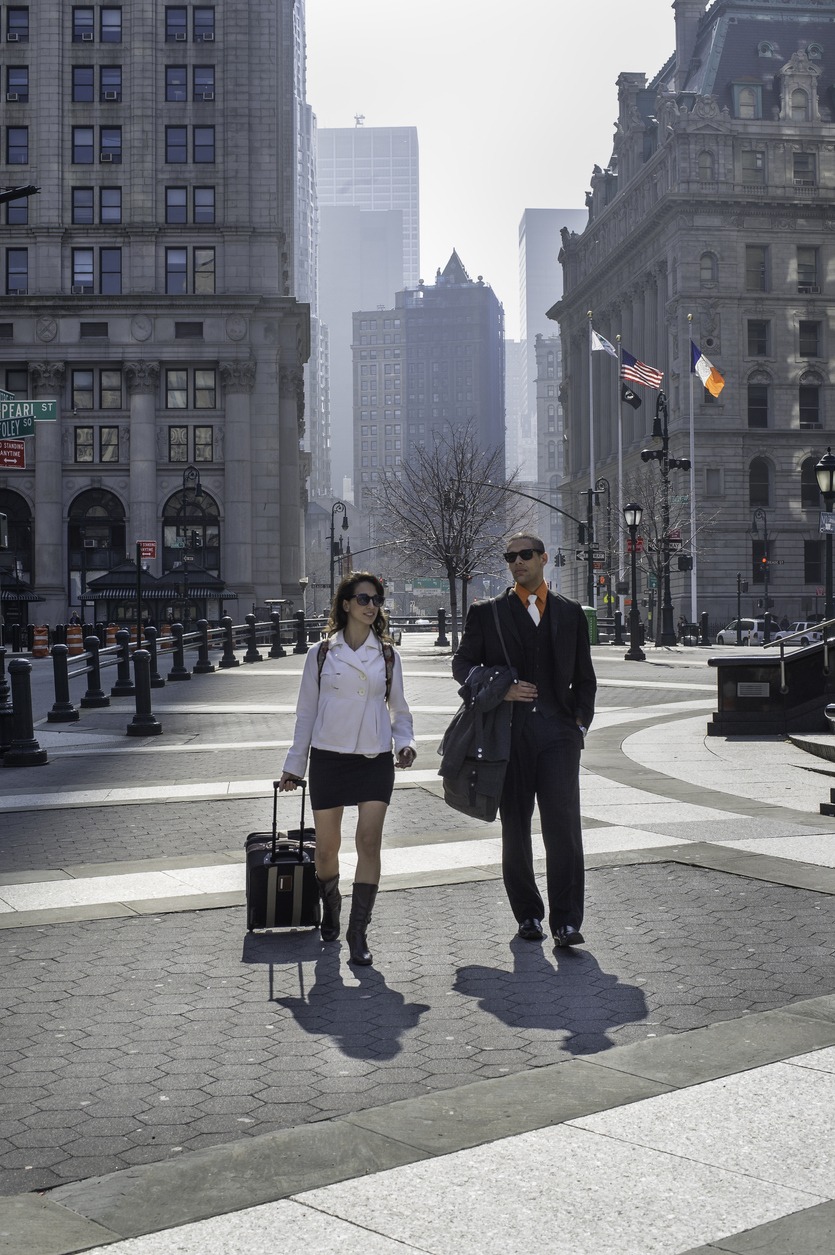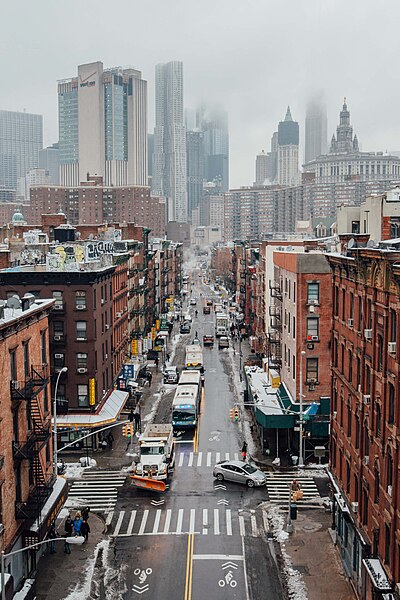Living in New York City without a car is not only feasible but also preferred by many of its residents. The city’s extensive public transportation system, walkability, and the cost and hassle associated with owning a car in such an urban environment make living without a vehicle an attractive option. This blog post delves into the aspects of NYC life that support a car-free existence, including the public transportation network, alternative transportation options, the impact on cost of living, and the lifestyle and cultural benefits.
New York City’s Urban Landscape
New York City’s urban landscape is a vibrant tapestry of towering skyscrapers, diverse neighborhoods, and sprawling green spaces that epitomize the essence of metropolitan living. From the iconic grid system of Manhattan to the unique cultural vibes of Brooklyn, Queens, The Bronx, and Staten Island, each area contributes to the city’s dynamic character. Central Park and other urban oases offer peaceful retreats from the city’s bustle, while the distinct identity of each neighborhood—from the historic charm of Harlem to the artistic energy of Bushwick—adds to NYC’s rich cultural mosaic, making it a global beacon of urban diversity and architectural marvel.
Navigate the family life in the Big Apple. Visit Family Life in the Fast Lane – Navigating Daily Routines in New York City.
The Concept of a Car-Free Lifestyle In New York City
Adopting a car-free lifestyle in New York City is a growing trend that resonates with the city’s fast-paced, efficient, and environmentally conscious ethos. This concept goes beyond merely navigating the city without a personal vehicle; it embodies a holistic approach to urban living that leverages NYC’s extensive public transportation network, walkability, and cycling infrastructure. Choosing to live without a car in the city is not only about convenience and cost savings but also about embracing a lifestyle that promotes sustainability, health, and a deeper connection with the city’s vibrant streets and diverse communities.
As you navigate the Big Apple, Discover the top getaways in the Upstate. Visit Escape the City – Discovering the Top Getaways in Upstate New York.
Learn how to Navigate your Personal Space in New York City. Visit Thriving in the Hustle – Finding Your Personal Space in the City That Never Sleeps.
The Public Transportation Network
New York City’s public transportation network, managed by the Metropolitan Transportation Authority (MTA), is a complex and comprehensive system designed to cater to the needs of a densely populated urban environment. It includes an array of transit options such as subways, buses, and commuter rails, each playing a crucial role in facilitating mobility across the city and its surrounding areas.
Overview of the MTA
The MTA’s services are pivotal to the daily life of New Yorkers, providing an essential backbone to the city’s transportation infrastructure. The subway system, with its extensive network of lines and stations, is the most visible and widely used component, connecting diverse neighborhoods across the boroughs. Complementing the subways, the MTA’s buses offer more localized routes, reaching areas not directly served by subways. For those living in or commuting from the suburbs, commuter rails like the Long Island Rail Road (LIRR) and Metro-North Railroad provide efficient links to the city’s heart, bridging the gap between urban and suburban living.
Accessibility and Convenience of the Subway System
The subway system is renowned for its accessibility and convenience, characterized by its extensive reach and 24/7 operation. With 472 stations, the system ensures that most areas within the city are within a reasonable walking distance of a subway stop, making it an incredibly efficient way to navigate the urban sprawl. The frequency of service, even during off-peak hours, underscores the system’s reliability, catering to the city’s round-the-clock lifestyle and diverse commuting patterns.
Role of Buses and Commuter Rails in Connecting Outer Boroughs and Suburbs
While the subway serves as the network’s backbone, buses and commuter rails play vital roles in extending mobility beyond the reach of subterranean tracks. Buses, with their extensive routes, penetrate neighborhoods less accessible by subway, offering a crucial surface-level complement to the underground system. Commuter rails, on the other hand, provide a vital service for those residing in the outer boroughs and neighboring regions, ensuring that the city’s economic and cultural opportunities remain accessible to a broader population. These elements of the public transit system work in concert to knit together the city’s diverse urban fabric and its suburban outskirts.
The 24/7 Operation of NYC’s Public Transit
One of the most defining features of New York City’s public transportation system is its continuous operation, day and night. This 24/7 service reflects the non-stop nature of the city itself, accommodating shift workers, late-night revelers, early morning commuters, and everyone in between. This round-the-clock accessibility not only adds to the convenience and reliability of the system but also underscores the city’s commitment to providing an inclusive, always-available mode of transportation, essential for the city’s dynamic rhythm and the diverse needs of its inhabitants.
Walking and Biking in the City
New York City’s urban fabric is designed in a way that naturally encourages walking and biking, making these activities not just modes of transportation but integral parts of the city’s lifestyle. The city’s layout, especially in pedestrian-friendly areas like Manhattan, along with its comprehensive bike lane network and bike-sharing programs, significantly enhances the quality of urban life.
- NYC’s Reputation as a Walkable City: New York City is renowned for its high walkability, with many of its neighborhoods designed to support a pedestrian-oriented lifestyle. The city’s dense arrangement of residential buildings, offices, shops, and cultural institutions means that daily necessities and amenities are often just a short walk away. This walkability is a key feature of the city’s design, promoting not only convenience but also vibrant street life and community interaction. The ease of walking from one place to another contributes to the city’s dynamic atmosphere and is a fundamental aspect of what makes NYC so unique.
- The Impact of Walking on Daily Life and Health: Regular walking, facilitated by the city’s pedestrian-friendly design, has a profound impact on residents’ daily life and health. It encourages an active lifestyle, contributing to better cardiovascular health, reduced stress, and overall well-being. The act of walking also deepens residents’ connection to their neighborhoods, allowing them to discover hidden gems and form stronger community bonds. The health benefits of this active lifestyle are complemented by the environmental advantages of reduced vehicle emissions, contributing to a cleaner, healthier city.
- Expansion and Benefits of the Bike Lane Network: In recent years, NYC has made significant strides in expanding its bike lane network, making biking safer and more accessible for residents and visitors alike. These dedicated lanes provide a secure space for cyclists, encouraging more people to consider biking as a viable and efficient transportation option. The expansion of the bike lane network not only supports the health and environmental benefits associated with cycling but also helps alleviate congestion on public transport and roads, making the city’s transportation system more resilient and diverse.
- Introduction to Citi Bike and Other Bike-Sharing Programs: The introduction of Citi Bike and other bike-sharing programs has revolutionized biking in New York City, making it more accessible to a wider audience. These programs offer a convenient and affordable option for short trips across the city, reducing the need for personal bike ownership and maintenance. The widespread availability of bike-share stations encourages spontaneous bike trips, further integrating cycling into the city’s transportation ecosystem. These programs not only complement the existing public transport options but also enhance the city’s commitment to sustainable and healthy urban mobility.
As you navigate the city without wheels, it is important to know which Intersections are the busiest. Visit Exploring the Hustle and Bustle – New York City’s Busiest Intersections Unveiled.
Navigate the Winter Season in New York City. Visit Winter in the City – A New Yorker’s Guide to Thriving in the Chill.

The Costs of Car Ownership
Owning a car in New York City is significantly more burdensome than in most other areas, due to a variety of factors inherent to its dense urban environment. The financial implications of car ownership in NYC, from parking to insurance and maintenance, often outweigh the perceived conveniences, leading many to reconsider the necessity of a personal vehicle and embrace the economic advantages of a car-free lifestyle.
Comparison of Car-Related Expenses in NYC vs. Other Areas
Car-related expenses in New York City are markedly higher than in less dense, more car-dependent areas. This discrepancy is due in part to the higher cost of living in NYC, which extends to virtually all aspects of car ownership. Parking fees, insurance premiums, and even regular maintenance are subject to the city’s premium pricing, making the overall cost of owning and operating a vehicle in New York significantly higher than in suburban or rural settings.
Parking Challenges and Costs
Parking in New York City is a notorious challenge, with limited availability and exorbitant costs. In Manhattan and other densely populated neighborhoods, finding street parking can be akin to finding a needle in a haystack, and when available, it often comes with restrictive regulations and the risk of costly tickets. Off-street parking solutions, such as garages and private lots, offer some relief but at a steep price, with monthly rates often surpassing the cost of a monthly public transit pass by a wide margin.
Insurance and Maintenance Costs in an Urban Environment
Insurance rates in NYC reflect the increased risk associated with driving in a densely populated area, including a higher likelihood of accidents, theft, and vandalism. These elevated risks result in higher premiums for NYC car owners compared to their counterparts in less congested areas. Additionally, the wear and tear on vehicles from navigating the city’s congested streets and variable road conditions lead to more frequent and costly maintenance and repairs, further inflating the cost of car ownership.
The Economic Advantage of a Car-Free Lifestyle
Given the high costs and logistical challenges associated with owning a car in NYC, many residents find that a car-free lifestyle not only is more economical but also aligns better with the city’s infrastructure. Opting out of car ownership frees individuals from the financial burdens of parking, insurance, and maintenance, allowing them to redirect those significant expenses toward other aspects of city living, such as housing, entertainment, or savings. Moreover, the comprehensive public transportation network, along with the feasibility of walking and biking, ensures that a car-free lifestyle in New York City does not compromise mobility but, in fact, enhances it by offering a more stress-free, economically efficient, and environmentally friendly way to navigate the urban landscape.
Alternative Modes of Transportation
In New York City, the abundance and convenience of alternative transportation options significantly enhance the feasibility and appeal of a car-free lifestyle. These alternatives, which include taxis, ride-sharing services, and car-sharing programs, provide flexible and efficient solutions for situations where public transit might not be the most convenient option, thereby filling any mobility gaps left by the city’s extensive public transportation network.
- Availability and Convenience of Taxis and Ride-Sharing Services: Taxis have long been a staple of New York City’s transportation ecosystem, offering on-demand, door-to-door service across all five boroughs. The advent of ride-sharing apps like Uber and Lyft has further expanded this convenience, allowing users to summon a ride with just a few taps on their smartphones. These services provide a high level of flexibility and are particularly useful for travel during odd hours, trips to less accessible areas, or when carrying heavy luggage. The competition between traditional taxis and ride-sharing platforms also means that there are often various pricing options available, catering to different budgets and preferences.
- Overview of Car-Sharing Services as a Flexible Alternative: Car-sharing services, such as Zipcar, offer yet another layer of flexibility for NYC residents who may occasionally need access to a car without the burdens of ownership. These services allow users to rent cars for short periods—sometimes by the hour—providing the convenience of a personal vehicle for errands, day trips, or any situation that requires private transportation. Car-sharing programs typically include the cost of insurance, fuel, and maintenance in their rates, simplifying the process and making it a cost-effective option for infrequent drivers. The widespread availability of car-sharing vehicles across the city, often parked in designated spots for easy access, makes this a highly viable option for those adopting a car-free lifestyle.
- The Role of Alternative Transportation in a Car-Free Lifestyle: Alternative transportation options play a crucial role in facilitating a car-free lifestyle in New York City, ensuring that residents can enjoy the benefits of mobility without the associated costs and responsibilities of car ownership. Whether it’s the convenience of hailing a taxi or ride-share for a direct route to a destination or the flexibility of using a car-sharing service for specific tasks, these alternatives collectively ensure that living without a personal vehicle in NYC is not only possible but also practical. They complement the city’s public transportation system, providing a comprehensive network of mobility options that cater to the diverse needs and preferences of New Yorkers, further enhancing the city’s appeal as a place where one can live fully and freely without owning a car.
Lifestyle and Cultural Benefits
Embracing a car-free lifestyle in New York City offers more than just economic savings and convenience; it fosters a way of life that is active, socially engaging, and environmentally responsible. This shift towards sustainable living is deeply intertwined with the city’s cultural fabric, promoting values that resonate with a growing global consciousness about health, community, and environmental stewardship.

The Active Lifestyle Promoted by Walking and Biking
Choosing to walk or bike as primary modes of transportation inherently encourages a more active lifestyle. New Yorkers who adopt these habits benefit from the regular physical activity that walking and biking entail, contributing to improved cardiovascular health, reduced stress levels, and overall well-being. This active engagement with the city also allows residents to experience New York’s vibrant streetscapes and diverse neighborhoods more intimately, turning daily commutes into opportunities for discovery and connection with the urban environment.
Social and Community Engagement Opportunities on Public Transit
Public transportation in New York City is more than just a way to get from point A to point B; it’s a communal space where people from all walks of life intersect. The shared experience of riding subways and buses fosters a unique sense of community and belonging among commuters. Chance encounters and observations during these journeys can lead to unexpected conversations, new friendships, and a deeper understanding of the city’s multicultural tapestry. This social dimension of public transit adds a rich layer to the urban experience, reinforcing the value of inclusivity and diversity.
The Environmental Impact of Reducing Car Usage
Opting out of car ownership in favor of walking, biking, and using public transit significantly reduces one’s carbon footprint, contributing to cleaner air and a healthier urban environment. Fewer cars on the road mean lower emissions of greenhouse gases and pollutants, which is crucial for a densely populated city like New York. This collective effort to minimize environmental impact reflects a broader cultural shift towards sustainability, with residents playing an active role in combating climate change and advocating for a greener city.
The Cultural Shift Towards Sustainability and Shared Resources
The move away from personal vehicles and towards shared modes of transportation is part of a larger cultural shift in NYC towards sustainability and the efficient use of resources. This shift is evident in the growing popularity of bike-sharing programs, car-sharing services, and the emphasis on public transportation as the backbone of urban mobility. By embracing these shared resources, New Yorkers are not only making practical choices that enhance their quality of life but are also endorsing values of sustainability, community, and collective responsibility. This cultural evolution towards more sustainable living practices is a testament to the city’s adaptability and its residents’ commitment to fostering a livable, environmentally conscious urban space for future generations.
Challenges and Considerations
Situations Where Not Having a Car Might Be Inconvenient:
Difficulty in transporting bulky items or large grocery hauls.
- Challenges in accessing remote areas not well-served by public transit.
- Traveling with young children, elderly family members, or individuals with mobility issues.
- Strategies for Managing Without a Car:
Utilizing delivery services for bulk purchases and groceries to avoid carrying heavy items.
- Leveraging ride-sharing services or taxis for occasional trips to less accessible destinations.
- Embracing remote work opportunities to reduce the need for daily commutes.
- Navigating the City During Transit Outages or Strikes:
Staying informed through city and MTA alerts for updates and alternative routes.
- Exploring alternative transportation options like bike-share programs and car-sharing services.
- Relying on community support, sharing resources, and information to overcome transit disruptions.
Conclusion
Living in New York City without a car not only is possible but also enhances the urban living experience. The convenience of public transportation, combined with the walkability of the city and the high costs associated with car ownership, makes a car-free lifestyle the preferred choice for many New Yorkers. This lifestyle not only benefits individuals financially and health-wise but also contributes to the sustainability and vibrancy of the urban environment. Whether you’re a lifelong New Yorker or contemplating a move to the city, embracing a life without a car opens up a world of possibilities, from financial savings to a richer, community-oriented lifestyle.


